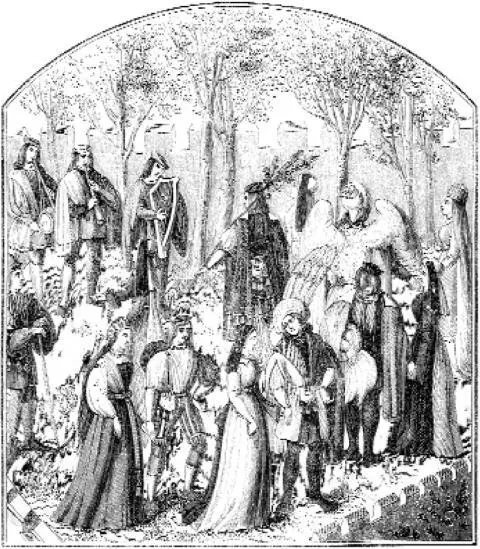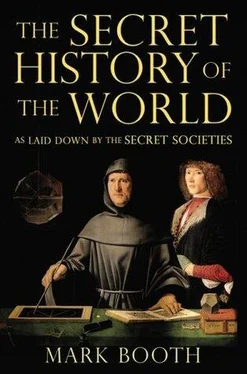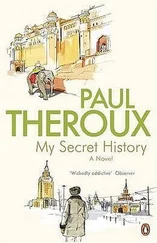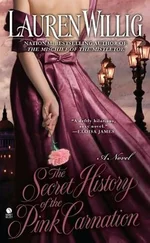Now, prompted by an impulse spreading up from Arabia, people began to take a new delight in the material world, a sensual pleasure in light, colour, space and the touch of things. The point of evolution of human consciousness moved out of monkish cells and into the pleasure garden. A scintillating sexual sheen was spreading over everything.
The Islamic occupation of Europe lasted longest in Spain. Then, as the brilliant civilization of Mauresque Spain spread northwards, this new way of being spread to the rest of the world, first to the south of France.
In the twelfth century Provence and the Languedoc became the most civilized region in Europe. Provençal poets called Troubadors adapted the Arabic-Andalusian poetic forms, inspired by their erotic éclat. Though she was not an esotericist, Helen Waddell’s The Wandering Scholars remains the classic account of this period of transition. She relates the story of an abbot riding out with a young monk who is being allowed outside the monastery for the first time, when they pass some women on the road.
‘They be demons,’ said the abbot.
‘I thought,’ said the boy monk, ‘that they were the fairest things I ever saw.’
The first Troubador to surface in the stream of exoteric history was Guillaume, Count of Poitiers and Duke of Aquitane, who began composing tender, yearning love songs when he returned from the Crusades. But although this early flowering was courtly, it spread through all classes. Among the Troubadors Bernart de Ventadorn was a baker’s son and Pierre Vidal was a furrier’s son. Perhaps as result of the influence of men like these, poetry now filled with vernacular objects — toads, rabbits, farm machinery, pubs, tumbling pigeons, crackling thorns and a cheek pillowed upon an arm.
The Troubador poet Arnaud Daniel, whom Dante described as il miglio fabbro , boasts of ‘hunting hares with an ox, gathering the winds and swimming against the tide’. He is talking in the topsy-turvy way characteristic of esoteric thinkers about the powers initiation has given him.

The Romance of the Rose was the most influential work of literature of the age. It describes a castle surrounded by a sevenfold — and therefore planetary — wall covered with emblematic figures. Only those who can explain their meaning are admitted to the beautiful garden of roses.
As well as crossing class barriers, the Troubadors reversed the traditional subjection of women to men. In Troubador poetry men enslave themselves to women. Marriage had worked as an agent of social control, but now the Troubadors encouraged a new form of love that was not arranged but spontaneous, and could flow between individuals of different social status.
Love became subversive like the secret societies themselves.
Being in love in this new way made people feel more fully alive.
It was a new and intense form of consciousness. In the poetry of the Troubadors love, this new way of being, can be reached if you successfully negotiate your way through a number of trials — passing through hell and high water, finding a passage through the labyrinth, combat and the slaying of wild beasts. You must solve riddles and choose the right casket.
Already pale and tortured by doubt the lover is trembling when he is finally allowed into the presence of the beloved. In consummation he achieves an altered state of consciousness, one that confers supernatural powers. All true lovers know that when they gaze deeply into each others’ eyes they really are touching each other.
In other words not only was the experience of falling in love introduced into the stream of human consciousness by initiates, but the experience of being in love was given the deep structure of the process of initiation .
Troubador literature is full of the symbolism of initiation, too. The most popular symbol of the Troubadors, the rose, was probably derived from Sufism where it was a symbol, among other things, of the entrance to the spirit worlds — and an obvious allusion to the chakras. In the famous story of the Nightingale and the Rose , the bird represents the human spirit’s longing for the divine. There is also an undeniable sexual level of meaning here, connected with the sensual, fleshy qualities of the rose. The ubiquity of the rose in Troubador love poetry should alert us to the presence here of esoteric, perhaps — as Ezra Pound believed — alchemical techniques of sexual ecstasy. Guillaume of Poitiers wrote, ‘I want to retain my lady in order to refresh my heart so well that I cannot age. He will live a hundred years who succeeds in possessing the joy of his love.’
At root the impulse behind the birth of the Renaissance was a sexual one. Let us be clear about the outrageous thing we are saying here — that the whole of human consciousness was transformed and moved to another level of evolution just because a few people performed the sexual act in a new way .
They made love for the first time.
When we reach the altered state of consciousness that is orgasm, can we think , or is orgasm inimical to thought? We can — and should — ask the same question of a mystical ecstasy.
Secret societies and heretical groups such as the Cathars, Templars and the Troubadors were teaching techniques of mystical ecstasy. Would the hard-won faculty of human thought be strong enough to survive these ecstasies?
IN THE COMMEDIA DANTE TOOK THE erotic-spiritual impulse of the Troubadors to another level. He expanded his love for Beatrice to embrace the whole cosmos.
At the beginning of the Commedia Dante describes how in middle age Dante found himself lost in a gloomy wood, when he was met by Virgil, one of the great initiates of the ancient world.
Virgil takes Dante through a portal with the words Abandon All Hope Ye Who Enter Here written over it. Virgil then leads him into an underworld like the one described in the Aeneid — and containing characters we have already met in our history. They cross the River Acheron and enter the realm of shades. They encounter the judge of the dead, Minos, and Cerberus, the three-headed dog. They enter the minareted city of Dis, encounter the three Furies and the Minotaur. They walk the banks of Lake of Blood in which the violent are immersed, including Attila the Hun. They traverse the Wood of the Harpies and the burning plain of sand. They meet a famous Scottish wizard Michael Scott, Nimrod and finally, in the deepest rung of Hell, Dante sees what he first takes to be a windmill. It is really Lucifer’s wings.
It would have been perfectly well understood by Dante’s contemporaries that this, the first part of his poem, described a real journey underground — in other words that Dante had undergone an underground initiation. He would perhaps have been led through a series of ordeals and ceremonies like the ones we saw the knight Owen undergo in Donegal.
‘Virgil’ may well have been the mask for Dante’s initiator in real life, a scholar called Brunetto Latini. Journeying as an ambassador to Spain, Latini had there met savants from both the Hebrew and Arab traditions. His great work The Book of Treasure included occult teachings on the planetary qualities of precious stones. The uninitiated often fail to appreciate the initiatic quality of Dante’s description of the cosmos, that the rungs of hell that spiral downward in the other direction are characterized by planetary qualities. Dante’s work is written to read on several different levels — the astrological, the cosmological, the moral, even, some say, the alchemical.
Читать дальше













